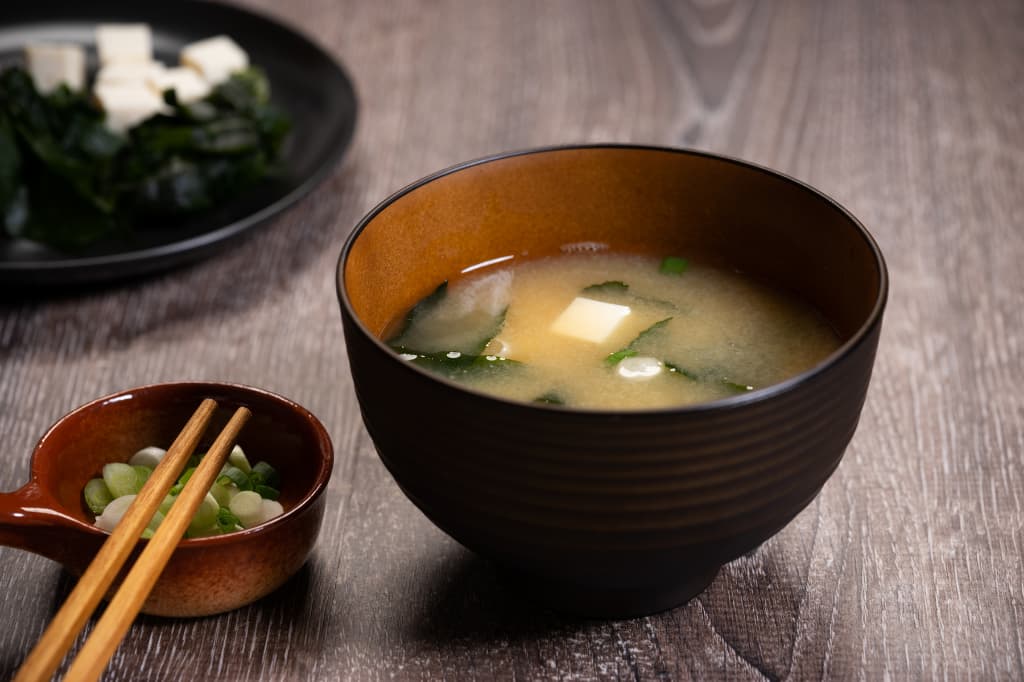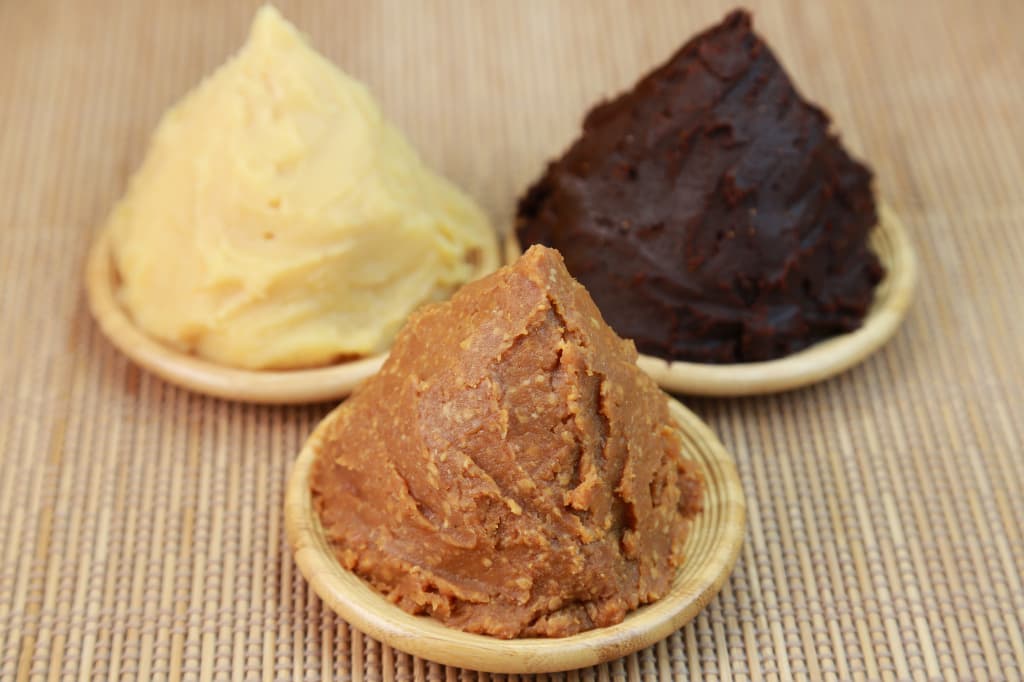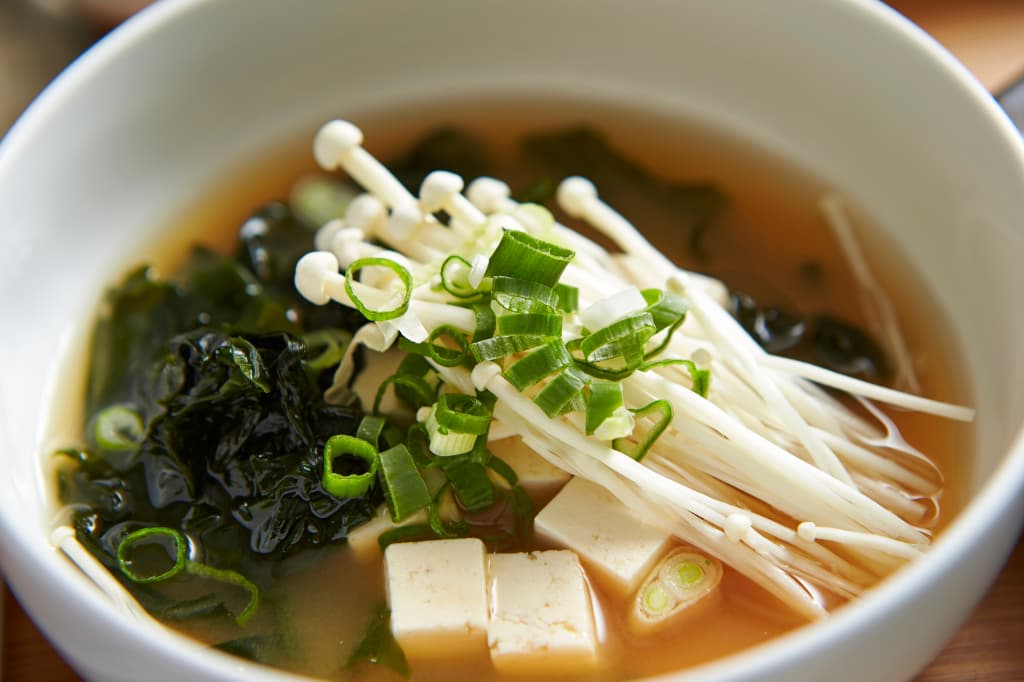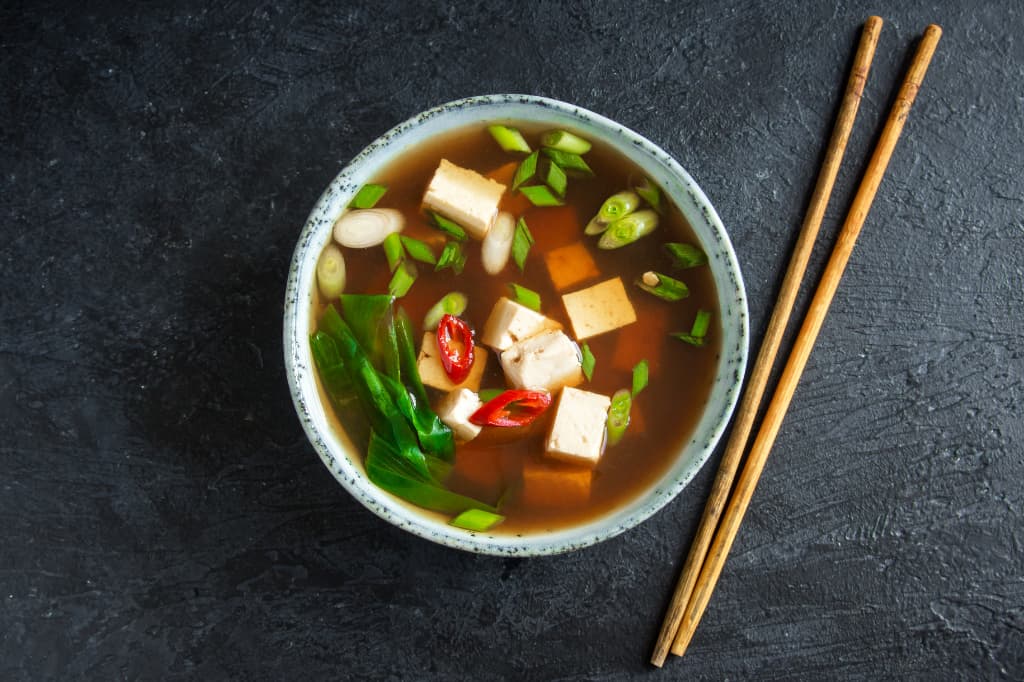Miso soup is one of the trending foods right now in the world. From being a traditional Japanese meal for over a thousand years, it has quickly become one of the most popular dishes. And unsurprisingly, for its nutritional benefits, people who follow the keto diet wonder, “Is miso soup keto friendly?”
Almost all of us have struggled at some point searching for meals that suit our diet.
Wondering if miso soup can be on your keto diet list? The answer is a very easy “Yes.” Miso soup is endorsed by keto dieters worldwide due to its immense benefits.

Table of Contents
What Is Keto?
The Keto diet is a well-known low-carb diet focused on weight loss. The actual term is “Ketogenic Diet,” the keto diet means cutting back heavily on carbohydrates. It substitutes that by incorporating more fat and protein into the meals.
A ketogenic diet helps to trigger a process called “Ketosis” in our body. It replaces carbs, the primary source of energy. The body breaks down protein and fat from the body to transform them into energy, resulting in quick weight loss.
Benefits Of Keto
The Keto diet is very beneficial for weight loss and medical conditions like epilepsy. Research has also shown that a ketogenic diet may help people with heart and brain diseases and acne. It also reportedly reduces the chances of cancer severely and slows the growth of cancer cells.
Although the keto diet is beneficial for many reasons, it is not advised for people with diabetes. Specially individuals with type-1 diabetes.
Miso
Miso is an important and popular ingredient in Japanese food culture, used since the eighth century or earlier. The most popular dish made using miso is the “Miso Soup.” Miso is made by fermenting soybeans with salt and koji (a mold).

Uses Of Miso
Miso is mainly a paste, usually mixed into sauces, soups, and other dishes. However, it is ok to eat miso uncooked and advised not to keep it at very high temperatures. Heating too much can destroy the good bacteria present in miso.
Miso Types
There are many varieties of miso available, differing in density, flavor, and color – the main factor being the length of fermentation time. Also, there are other reasons like ingredients.
Miso is available in many types. For example, white, red, and mixed miso.

The preferred miso type varies by region and season. Notably, Japan is famous for its many regions, specializing in different miso variations.
White Sakiyo Miso
It is the lightest type of miso, both in terms of color and flavor. Fermented for a relatively short period and made from soybeans and rice. Tastes sweetest than other types, more appropriate for use in dips, marinades, or keto salad dressings.
Aka Red Miso
Much stronger in taste than white miso. It is made from fermented soybeans, barley, and other grains.
Red miso is typically used on meats, vegetables, and soups. A tiny amount is enough as it has greater concentration.
Shinshu Yellow Miso
This particular type of miso, yellow in color, falls between the red and white miso. A well-recommended variant for most people as it maintains a good medium. It provides an excellent taste to low-carb or keto diet recipes.
Shiro Awase Miso
This is a mixture of different types of miso, resulting in a very interesting flavor. Brownish in color, it is typically fermented for a few weeks. It can be a substitute for dairy ingredients for vegans.
How To Get Miso?
While looking for miso, you should find it labeled “miso paste” or “soybean paste.” It is also usually found locally in the refrigerated food area of health-related food stores.
You should search for miso in tubs and jars in Asian grocery stores. Big grocery shops keep miso in tubs around frozen tofu.
You should look for miso that has a brief ingredient list. Also, being free of stabilizers and preservatives.
Storage
Miso is a fermented product. So, it does not require much work to store it. You can easily keep it well for a year or longer by storing it sealed tightly in a refrigerator.
The shelf life of miso differs depending on the fermentation period. Light miso does not last as long as darker miso variants. So, it should be used before around 12 months.
Miso oxidizes if not kept wrapped with a piece of plastic after every use. Doing this will keep it from discoloration.
Miso Soup
Miso soup is a popular and traditional Japanese soup. Generally prepared with dashi stock and softened miso paste.
Many optional ingredients are also used in miso soup. They vary depending on seasons, regions, and personal preferences. The most common ones are tofu and abura-age.
Miso Soup Stock
The dashi stock is made from different seafood: dried baby sardines, dried kelp, or shiitake mushrooms. Miso soup also serves as a vegan soup by using kelp or shiitake.
One can also use shellfish to impart flavors that serve the role of dashi. So, preparing stock ahead of time is not necessary.
American and European style miso soup often dissolves miso into a Western vegetable stock. Items such as carrot, potato, negi, and daikon radish might also be used.
Miso Soup For Low Carb Diet
Miso soup has gotten incredibly popular among low-carb dieters. For a person searching to know, “Is miso soup keto friendly?”- here are a few reasons:
- Miso soup is low in calories and carbs. Thus, it is an ideal option to accompany the main meal as a side dish.
- Miso soup has an impressive nutritional density along with many vital micronutrients.
- Highly customizable. It is possible to change the recipe depending on one’s taste and nutritional requirements.
Miso Soup Options
Miso soup is very accessible and offered in many varieties nowadays. Numerous brands have ready-made miso soup mixes in packs. Some top brands are Miso Master, HIKARI, Muso From Japan, and Eden.
Some of them are true to the original recipes. The rest may have added ingredients that may not suit the keto diet.
Home-made miso soups are certainly among the best miso soup recipes. It retains the essential nutrients and health benefits as suited for the keto diet.
How To Make Keto Miso Soup?

Step 1
Cut the onions, carrots, celery, and shiitake mushrooms into thin slices. Boil for around 10 minutes. While waiting, soak the sea vegetables.
Step 2
Thoroughly rinse the vegetables and add them to the pot. Again boil them for 10 minutes. When the veggies become soft, add water.
Then let the soup boil. While doing so, peel and grate the ginger. Extract the ginger juice and keep it in a bowl. A juicer might make it easier to do so.
Step 3
Once the soup starts boiling, let it simmer and cook for 10-15 minutes. This time without the lid. Afterward, turn off the stove and let it cool for some time.
Use a whisk to mix the miso paste in the soup. Make sure there are no chunks of miso left. These can be very salty and might ruin the enjoyment while eating.
And just like that! You have made some delicious, healthy, and keto friendly miso soup, ready for you to enjoy and have a great time.
Nutrients In Miso Soup
Depending on the ingredients and brands, the nutrient amount in miso soup can vary a little. But generally, we can expect around a certain amount. These values should clear up your question – “Is miso soup keto friendly?” further.

For a serving size of 28 grams of miso soup, there are:
- Calories- 56
- Carbs- 7 grams
- Fat- 2 grams
- Protein- 3 grams
- Sodium- 43% of recommended daily intake (RDI)
- Manganese- 12% of RDI
- Vitamin K- 10% of RDI
- Copper- 6% of RDI
- Zinc- 5% of RDI
Health Benefits Of Miso Soup
Research has shown numerous benefits of having miso soup on a regular basis. Various ingredients in miso soup have made it a versatile meal. In fact, in the 1960s, miso was recognized as a ‘super food’ in Japan for its health benefits.
The Abundance Of Vitamins And Minerals
Miso soup is a high-protein food that’s also high in minerals and plant components. B vitamins, magnesium, selenium, calcium, iron, and phosphorus are among the other nutrients found in it.
Manganese, vitamin K, copper, choline, and zinc are abundant. Furthermore, the fermentation process of soybeans aids the body in absorbing nutrients from the miso soup and other foods consumed together.
Digestion Improvement
Miso is made by fermenting soybeans, which improves digestion and nutrient absorption. It has many probiotics which improve gut health.
The predominant probiotic strain in miso is called A. Oryzae. According to various studies, this probiotic helps reduce symptoms linked with digestive disorders.
Cancer Prevention
Consuming miso soup on a regular basis lowers the risk of some cancers. Researchers have stated that this might be due to the beneficial chemical compounds contained within soy.
It counteracts the effects of salt that promote cancer. Furthermore, studies on animals show that it may also lower the risk of lung, stomach, and colon cancer.
Improvement Of Brain Functions
Just like other probiotic foods, miso improves brain functions such as memory. While also reducing other symptoms such as anxiety, stress, and depression.
Reduction Of Unhealthy Cholesterol
Researchers have found in some studies that miso may help lower harmful cholesterol (LDL) levels in the blood.
Reduction In Blood Pressure
Many health specialists suspect that miso might help people with higher blood pressure. Although this needs further research.
Frequently Asked Questions
1. Does miso soup contain carbs?
Though miso soup does contain carbs, it is very negligible. Having only 3 grams of net carbs per serving, it will surely be at the bottom end of foods with carbs. Usually, miso soup does not include sugar.
2. Is miso soup allowed on keto?
Yes, miso soup is allowed on keto due to its very low carbohydrate amount. Only 3-4 grams per serving.
3. Does miso soup contain fat?
Miso soup usually contains very low amounts of fat. But it is recommended to have ingredients with high fat for the keto diet. So, if the reason for having miso soup is in the keto diet, you will probably want to add fat to the soup.
4. Is miso soup good for weight loss?
Miso soup can be very helpful to people trying to lose weight. It contains approximately 50 calories per bowl. It also has various essential micronutrients.
5. Does miso soup prevent cold and flu-type diseases?
Miso provides a lot of vitamins and nutrients. These increase the immunity of the human body and prevent cold and flu.
6. What does miso taste like?
Miso can taste different depending on the type. The length of the fermentation period determines the taste of the miso. White miso tastes a bit sweet, whereas much darker miso tastes very salty.
Miso is not meant to be eaten alone. It can add a very strong and spicy taste.
7. Is keto safe for people with diabetes?
The Keto diet is generally not recommended for people with diabetes. Especially people with type-1 diabetes. The main reason for this is that the keto diet influences the body’s insulin production.
8. Is there protein in miso soup?
Miso soup is rich in protein. The dashi soup stocks are usually made of dried baby sardines, kombu (dried kelp), and bonito (similar to tuna). There are a lot of high protein miso soup recipes out there.
9. Is there gluten in chickpea miso?
Most chickpea miso brands produce miso using gluten-free grains. So, do not be worried; you can easily find gluten free miso soup.
Final Thoughts
Miso soup is the perfect food to add to the keto diet list. The overall benefits are too attractive to miss out on. Not just for keto dieters but for anyone looking to be healthy.
Averaging at only 3-4 grams per serving makes it an excellent meal to include in a low-carb diet. Not leaving any doubt on – is miso soup keto friendly? or not.
Adding various low-carb and high protein items takes it further. For example, tofu, mushroom, beef, chicken, etc. While also making it more delicious.
The Keto diet has been a go-to diet for weight loss for many years. And tasty and healthy miso soup makes it an enjoyable time throughout.
